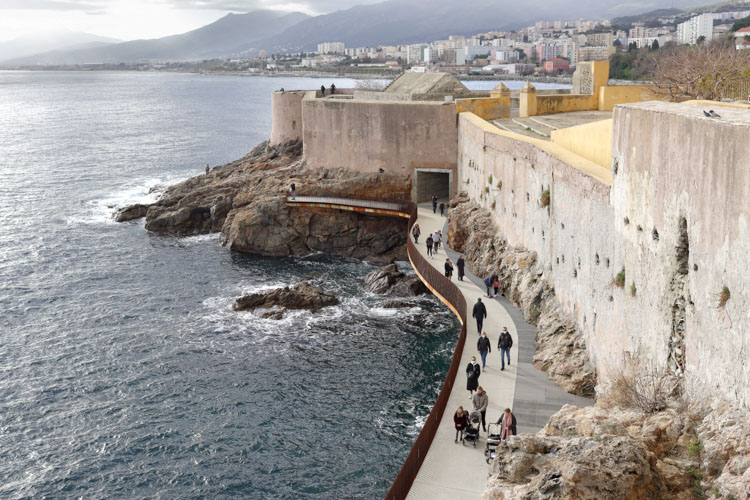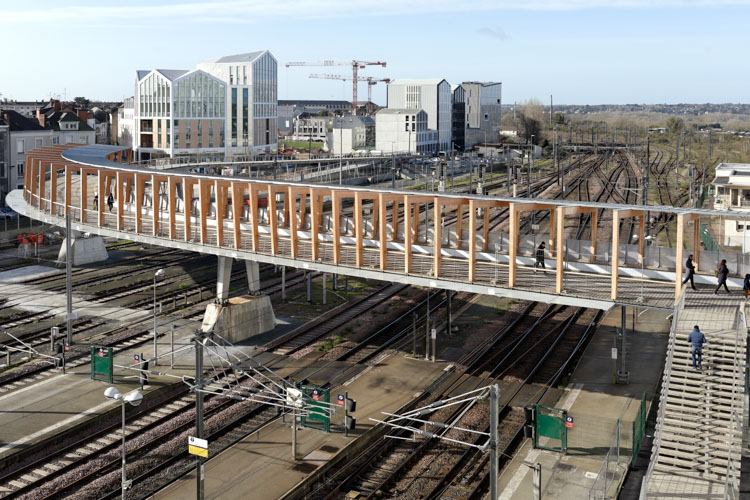


























Two Pedestrian and Cycle Bridges
Willebroek |
Belgium –
2012
Client
Waterwegen en Zeekanaal NV
Start of construction
10 | 2010
Size
67 m | 33 m
Construction budget
1.3 M€
Competition winner
2006
Completion
12 | 2012
The nature reserve in Willebroek is a popular destination for cycling tourists due to its moors, riverbanks, and the Zennegat lock, where the rivers Senne, Dyle, and the canal converge. The two bridges – one fixed and one movable – connect the pathway network and allow for a crossing of this valuable recreational area. Integrating the bridges into the natural surroundings is a primary concern of the project. They are distinguished by their structural finesse and elegance, with finely selected materials allowing for maximum transparency of the structure and ensuring perfect integration with the riverbed and surrounding landscape.
Both bridges run perpendicular to the riverbanks and the canal and are seamlessly integrated with the bike paths. The use of the same materials and features, especially the railings, further emphasizes the continuity between the bridges. The bridges are made of painted steel, while the deck is covered with oak planks measuring 100mm x 50mm. The handrails are also made of oak and are supported by double railing posts, with a stainless-steel mesh serving as infill between the posts. The supporting structure remains hidden under the bridge deck to avoid obstructing views of the landscape.
The fixed bridge is designed as a flat three-chord truss, with its statically optimized construction elements ensuring maximum transparency. The arch of the lower chord accentuates the truss’s geometry and gives the bridge its dynamism. The bridge stretches between the banks, with the connection to the side supports disappearing amidst lush vegetation.
The movable bridge allows for the passage of ships without height restrictions. A flat horizontal deck is raised using a lifting cylinder mounted below the deck. The horizontally positioned lifting piston pulls the deck towards the shore, making the movable end shift from below towards the opposite bank. Side-mounted pivoting arms accompany the deck’s movement and are positioned at the height of the railings. This unique folding mechanism allows for the integration of the bridge’s mechanical parts.
Architects: Dietmar Feichtinger Architectes
Engineers: Technum
Both bridges run perpendicular to the riverbanks and the canal and are seamlessly integrated with the bike paths. The use of the same materials and features, especially the railings, further emphasizes the continuity between the bridges. The bridges are made of painted steel, while the deck is covered with oak planks measuring 100mm x 50mm. The handrails are also made of oak and are supported by double railing posts, with a stainless-steel mesh serving as infill between the posts. The supporting structure remains hidden under the bridge deck to avoid obstructing views of the landscape.
The fixed bridge is designed as a flat three-chord truss, with its statically optimized construction elements ensuring maximum transparency. The arch of the lower chord accentuates the truss’s geometry and gives the bridge its dynamism. The bridge stretches between the banks, with the connection to the side supports disappearing amidst lush vegetation.
The movable bridge allows for the passage of ships without height restrictions. A flat horizontal deck is raised using a lifting cylinder mounted below the deck. The horizontally positioned lifting piston pulls the deck towards the shore, making the movable end shift from below towards the opposite bank. Side-mounted pivoting arms accompany the deck’s movement and are positioned at the height of the railings. This unique folding mechanism allows for the integration of the bridge’s mechanical parts.
Architects: Dietmar Feichtinger Architectes
Engineers: Technum


